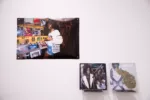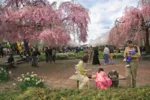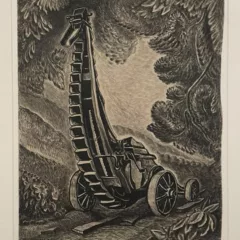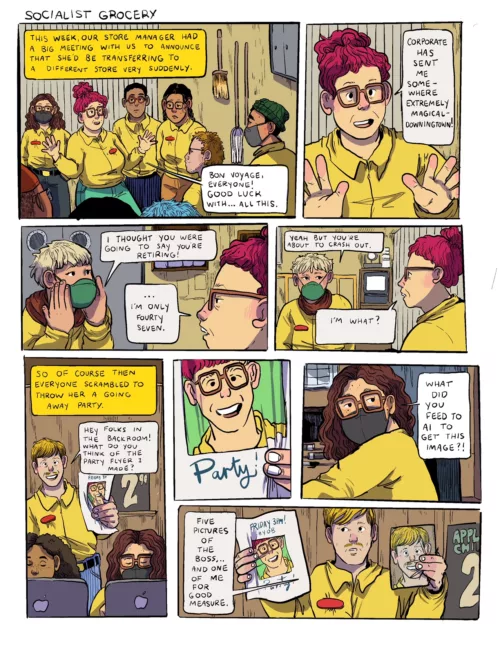Review of Staged: Studio Photographs from the Collection
By Lindsay Marson
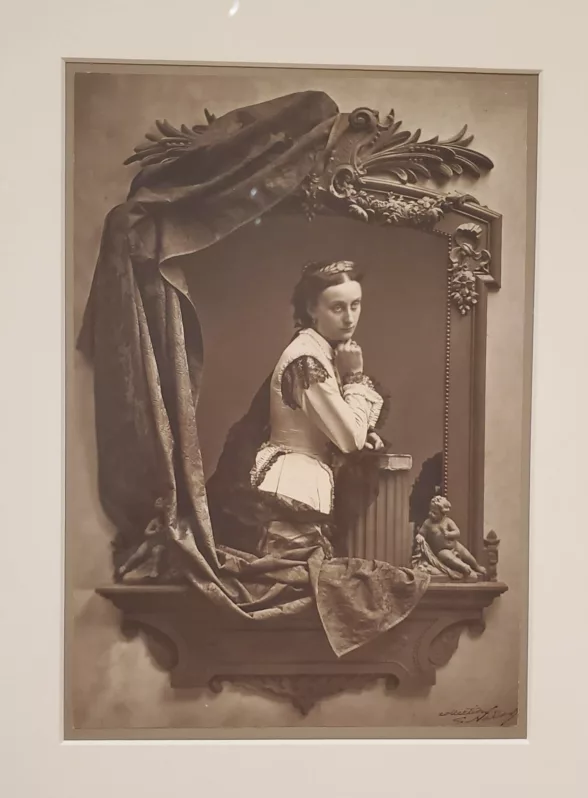
Staged: Studio Photographs from the Collection showcases a large variety of photography through time. Photography is such a unique medium due to its almost non-existent barrier of entry, anyone with a phone can begin a journey into the art world without ever leaving their home. The exhibition, at the Philadelphia Museum of Art, highlights highly staged photography that does not exist much anymore outside of professional industries.
Though mostly focused on black and white portraiture the exhibition had a diverse display of photographs, ranging from abstractions to still lifes. Unfortunately despite this range of subject matter there was a noticeably larger amount of photos from the nineteenth and twentieth century compared to contemporary photography, which may have limited the ability to showcase how photography has truly evolved over time.
One of the earliest works in the gallery, Adolphe Jean Francois Martin Dallemange’s “Princess Olga Cantacuzene” (1860) has a more complex composition than other photography displayed from that era. It features a woman who is assumedly the photo’s namesake, Princess Olga, in fine clothing framed by an ornate window. The unique use of a framed window with a flat interior gives it an almost two dimensional feel. The piece blurs the line between photography and the traditional painted portraiture of the time.
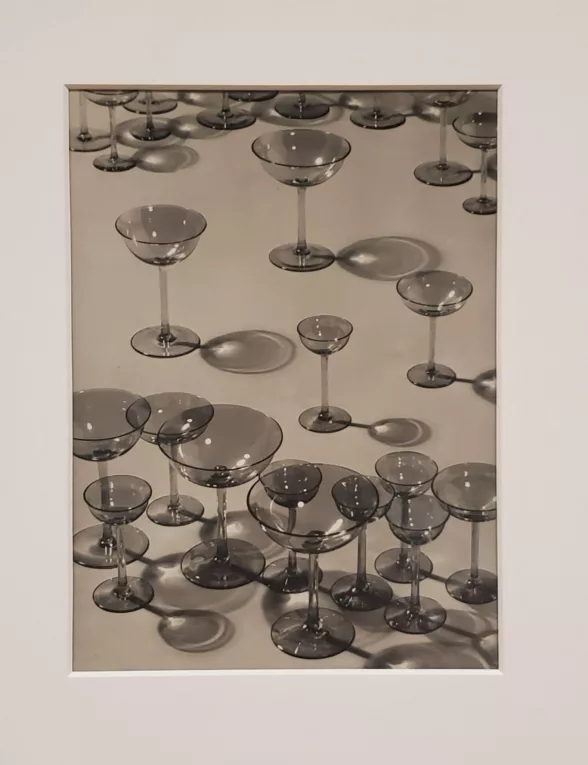
Josef Sudek’s untitled piece from the 1930’s highlights the shift from photography being seen as a simple capture of a place in time to a legitimate art form after the official recognition of photography as a form of art in the late nineteenth century. The photograph utilizes the transparent properties of glass to create stunning overlapping shadows. Despite how effortless the final photograph looks, the accompanying caption encourages viewers to stop and think for a moment about how much effort and knowledge it must have required to arrange lights in such a specific way to create an arrangement of shadows.
Zeke Berman’s “Cans, Triptych” (1993) takes full advantage of the unique medium of photography. The shaky stark white outlines on an almost pitch black background are reminiscent of a contour line drawing. At first glance it is difficult to distinguish as a photograph, a truly impressive feat for a medium based entirely on capturing the real world. The piece invites the viewer to examine every small detail to determine the true nature of the image, and in turn challenges ideas of what photography should look like.
I found that the closer the photographs were to the modern day they became much more experimental, and as a result much more abstract as well. This shift could be partially attributed to the evolution of camera technology and introduction of photo editing software, though I believe this reflects the wider shift in the art world towards abstraction. Comparing Zeke Berman’s “Cans, Triptych” (1993) to Adolphe Jean Francois Martin Dallemange’s “Princess Olga Cantacuzene” (1860) you would think they used different mediums entirely. Seeing such a massive change in photography is a beautiful glimpse into the ever changing nature of art.
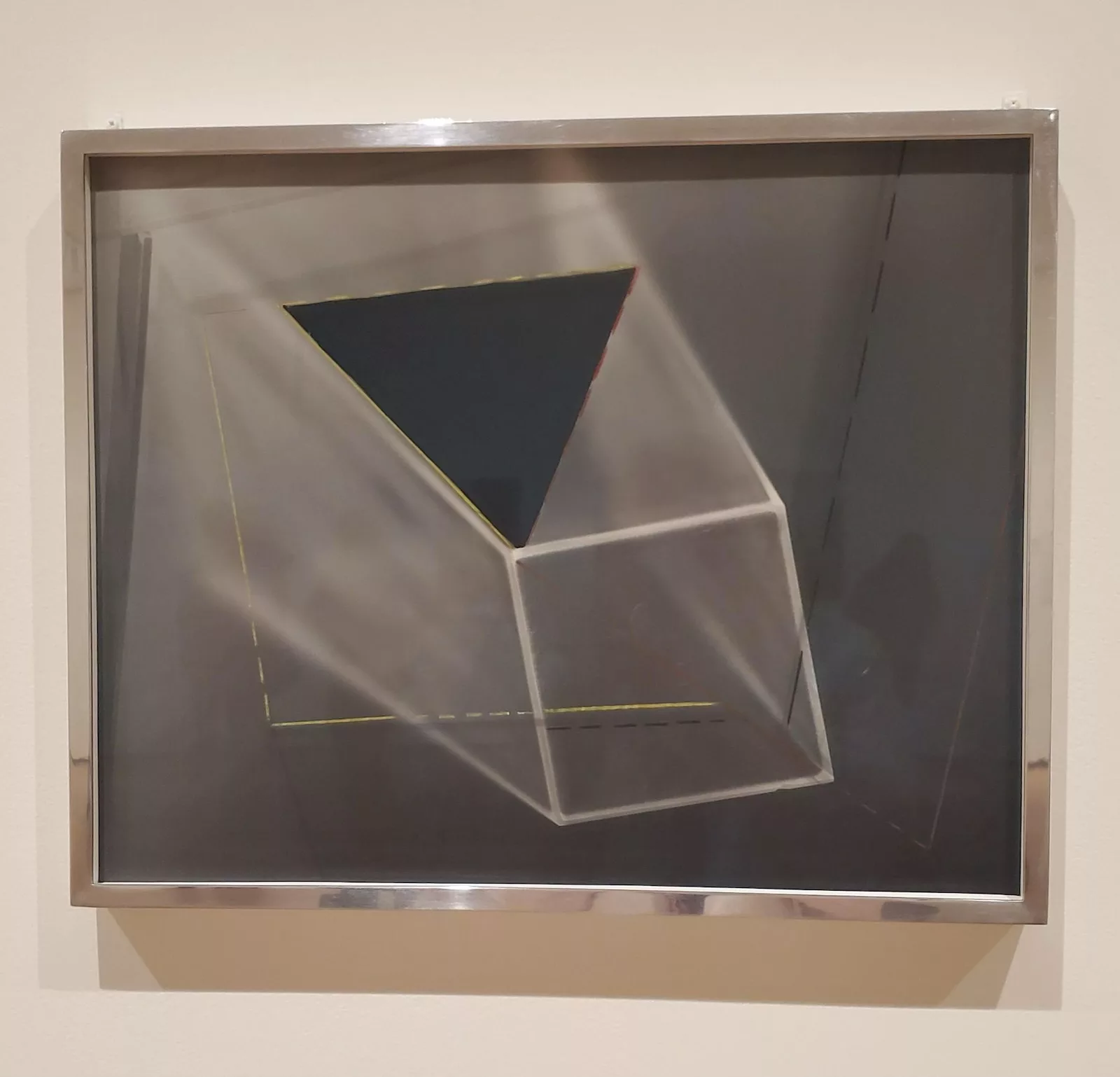
The Staged exhibition is an eye opening view into the diverse world of photography. Despite this exhibition focusing solely on fine art photography, hopefully this exhibition will inspire more everyday people to view the world through a creative lens and begin their journey as artists.
Staged: Studio Photographs from the Collection, through June 29, 2025. Philadelphia Museum of Art, 2600 Benjamin Franklin Parkway, Philadelphia, PA 19130
About the author
Lindsay Marson is an Illustration major at Moore College of Art and Design. She spends her
time surfing the web looking for inspiration and exploring music.
This post is part of a collaborative project between Artblog and Chenoa Baker’s Writing for Art and Design class at Moore College of Art and Design.


